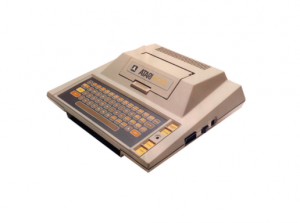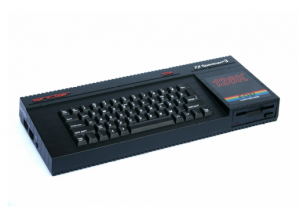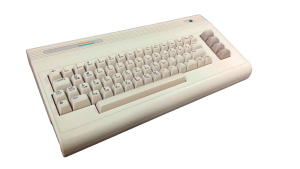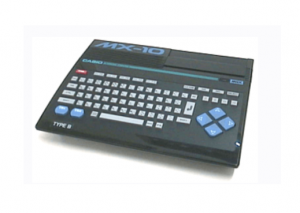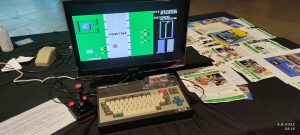The Atari ST was a popular home computer in the 1980s that combined powerful performance, a relatively affordable price, and a user-friendly graphical interface. The Atari ST (ST refers to Sixteen/Thirty-two, referring to its 16/32-bit architecture) was released in 1985 and entered the market to compete primarily with the Commodore Amiga, Apple Macintosh, and IBM PC. The computer found users in households, small businesses, music studios, and on the desks of game developers. The development of the Atari ST was driven by the rapid growth of the home computer market and advances in technology. Jack Tramiel, who had previously led Commodore, became CEO of Atari and acquired Atari Inc.’s consumer products business in 1984. Tramiel’s goal was to create a powerful but affordable computer that would meet the needs of both business and home users. Development of the Atari ST began soon after Tramiel took over. The computer was designed quickly and was unveiled to the public in January 1985 at the CES trade show in Las Vegas. The first units were delivered in the summer of 1985, when the 260ST went on sale. The development of the Atari ST was led by Shiraz Shivji, who had previously worked at Commodore under Jack Tramiel. Shivji led the design team that developed the ST in just a few months. The team’s fast working methods enabled the computer to be released ahead of its competitors, but also resulted in some compromises in terms of hardware and software quality. Operating system: TOS (The Operating System) and GEM (Graphical Environment Manager), which made the Atari ST one of the first computers to feature a mouse-driven graphical user interface. Positioned as a more affordable alternative to the Apple Macintosh and a competitor to the Commodore Amiga, the ST distinguished itself with its sharp graphical capabilities, MIDI integration for musicians, and relatively low price point.

One of the key advantages of the ST was its built-in graphical operating system, GEM (Graphics Environment Manager). GEM provided a familiar desktop interface with windows, icons, and pull-down menus, making it intuitive for business users. This environment supported a wide range of productivity applications that helped the ST become useful in offices, studios, and professional settings. The ST was host to several word processors and office suites that enabled users to handle professional documentation. Among the most prominent was WordPerfect, a dominant player in the word processing market during the 1980s, which was ported to the ST to give businesses compatibility with industry standards. Other popular packages included 1st Word and its successor 1st Word Plus, which were bundled with many ST systems and provided straightforward text editing and formatting. For more advanced needs, applications such as Signum! (from Germany) offered desktop publishing-level capabilities, making the ST useful for producing newsletters, manuals, and promotional materials. Spreadsheet software was equally important for businesses. VIP Professional and LDW Power brought Lotus 1-2-3 compatibility, enabling small businesses to manage finances, budgets, and analytical tasks. These tools made the ST competitive in environments where numerical modelling and financial planning were essential.
The Atari ST also supported database management software, which was critical for business record-keeping. Superbase Professional became one of the best-known database packages on the platform, allowing users to create, query, and manage structured information. This made it particularly useful for customer records, inventories, and small-scale business operations. Another notable application was dBASE II, a popular database language and environment that was widely used in the 1980s across multiple platforms, including the ST. These programs provided flexibility for developing custom business solutions without requiring large-scale mainframe systems. In addition to office productivity, the Atari ST gained recognition in computer-aided design. With its relatively high-resolution monochrome display mode (640×400 pixels), it was suitable for detailed technical drawings. Programs such as CAD-3D and DynaCADD gave engineers, architects, and designers affordable access to CAD software at a time when dedicated CAD workstations were prohibitively expensive. While the ST could not match the power of specialized systems, it opened opportunities for small design studios and individual professionals to adopt digital drafting tools.
Beyond word processing, spreadsheets, databases, and CAD, the Atari ST hosted a wide range of general-purpose business utilities. Desktop publishing programs like Calamus allowed for professional-quality page layout, rivaling early Macintosh solutions. Communications software supported modem use, enabling businesses to connect to bulletin board systems (BBS), exchange data, or even access early online services. Backup utilities, accounting software, and project management applications rounded out the ecosystem, making the ST a practical all-in-one machine for small enterprises. Although the ST was overshadowed in the business market by the rapidly expanding IBM PC standard, it played a valuable role in democratizing access to professional computing. Its lower cost made it attractive to small companies, consultants, and independent professionals who could not afford IBM-compatible systems. In Europe especially, the ST developed a reputation as a reliable office tool, with German developers in particular producing high-quality productivity applications such as Signum! and Calamus.
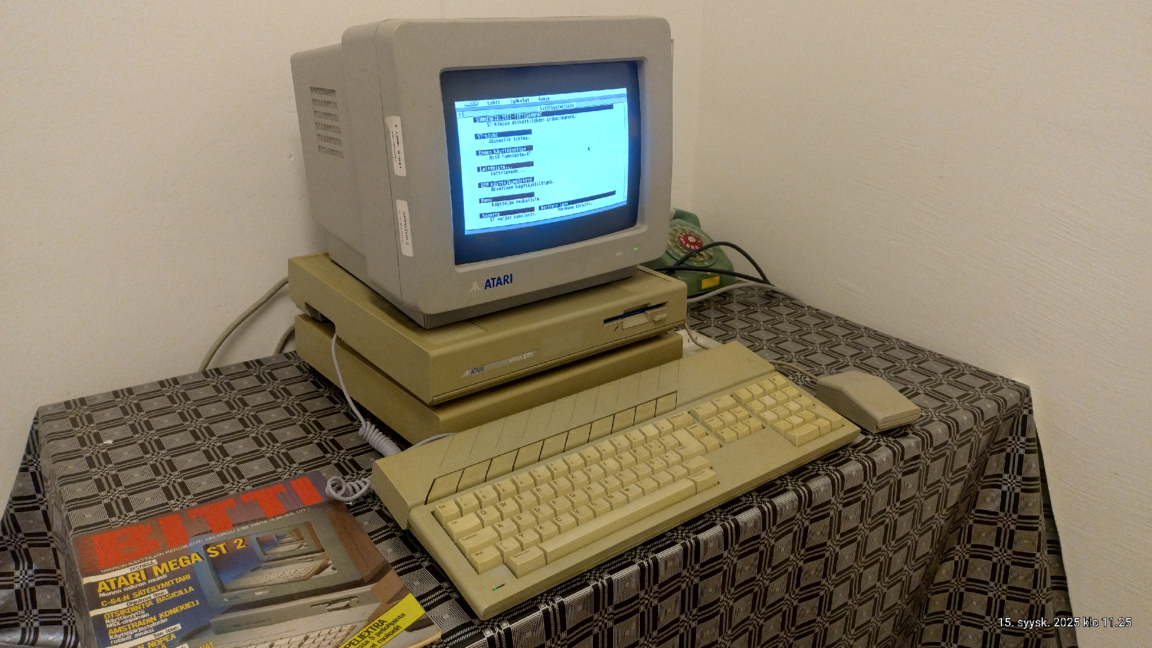
The Atari ST was a success in many markets, especially in Europe. Its sales figures are estimated at 4-5 million units worldwide. In its first year, the Atari ST sold extremely well and found an established user base, particularly among hobbyists and music studios. The Atari ST was designed using the latest technology on the market and offered excellent performance and versatility by the standards of the time. The Atari ST was a unique combination of affordability, performance, and versatility. Although it did not win the competition with the Commodore Amiga or IBM PC, it left a lasting mark, especially in music production and hobbyist circles. The MIDI ports on the Atari ST made it particularly popular for music production. That made it attractive choice to musicians, as it allowed them to easily control synthesizers and other MIDI-compatible devices. Well-known music applications included:
- Cubase: A professional-grade music production tool.
- Notator: A notation program and sequencer.
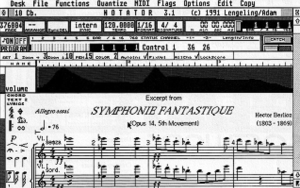
The history of the ST is an important part of the story of computer development. The Atari ST was known for its wide range of software and games. The most important software categories were music applications, games, and utility programs. While it was widely adopted for music production and desktop publishing, its role as a gaming machine was equally significant. The ST offered developers an accessible platform with strong hardware specifications, and its large library of games left an enduring mark on home computing culture. The ST’s architecture was built around the Motorola 68000 CPU, a 16/32-bit processor running at 8 MHz, with resolutions up to 640×400 in monochrome or 320×200 in color. Although its sound chip was more limited compared to the Amiga’s advanced audio hardware, creative programmers still managed to squeeze impressive results from it. Importantly, the ST’s relatively simple development environment meant that many studios released their games on the ST first, before porting them to other systems. This ensured that the Atari ST had a prominent place in the European gaming market, particularly in the United Kingdom, France, and Germany.
Several titles became iconic on the Atari ST, both for their technical achievements and their cultural impact. One of the most famous was Dungeon Master (1987), developed by FTL Games. It was a groundbreaking real-time role-playing game that pushed the ST’s graphical capabilities and became a benchmark for immersive gameplay. Another key title was Carrier Command (1988) from Rainbird, which combined strategy and vehicle simulation in a way that captivated players. Meanwhile, the football management simulation Championship Manager by Domark began its long-lasting franchise history on platforms including the ST, quickly becoming a cult favorite. The machine also hosted some of the most beloved action and arcade conversions of the era. Titles like Arkanoid (Taito/Imagine), Bubble Bobble (Taito/Firebird), and Xenon (Bitmap Brothers/Bitmap Brothers’ own label) demonstrated that the ST could deliver fast-paced, colorful gameplay despite its audio limitations. The Bitmap Brothers, in particular, became synonymous with the Atari ST scene. Their stylish titles such as Speedball (1988) and Xenon 2: Megablast (1989) showcased slick design, memorable music, and a futuristic aesthetic that came to define late-80s gaming.
Other publishers played central roles in shaping the ST’s game library. Psygnosis, known for its distinctive box art and polished productions, released Obliterator, Shadow of the Beast, and Lemmings, the latter becoming one of the most widely loved puzzle games of all time. MicroProse also brought its catalog of deep simulations, including F-19 Stealth Fighter and Gunship, appealing to strategy and simulation enthusiasts. Sierra On-Line contributed with their celebrated graphic adventures such as King’s Quest and Space Quest, making the ST an important platform for narrative-driven gaming as well. By the early 1990s, however, the ST’s position as a gaming platform began to decline. The Amiga, with its superior sound and graphics, gained greater momentum among developers, while dedicated game consoles such as the Sega Mega Drive and the Super Nintendo redefined the entertainment landscape. Nonetheless, the ST maintained a loyal following, particularly among European gamers and developers who had grown accustomed to its straightforward design. Its MIDI functionality ensured it continued to thrive in music studios even as its role in gaming diminished.
In retrospect, the Atari ST was not just a computer for musicians or productivity; it was a vibrant gaming platform that hosted some of the most innovative and influential titles of its era. Through publishers like the Bitmap Brothers, Psygnosis, MicroProse, Domark, and Sierra, the ST built a library that ranged from action and arcade classics to deep strategy and narrative-driven adventures. The machine’s influence on game development in Europe, as well as its contribution to the evolution of iconic franchises, secures its legacy as one of the great home computers of the 1980s.




